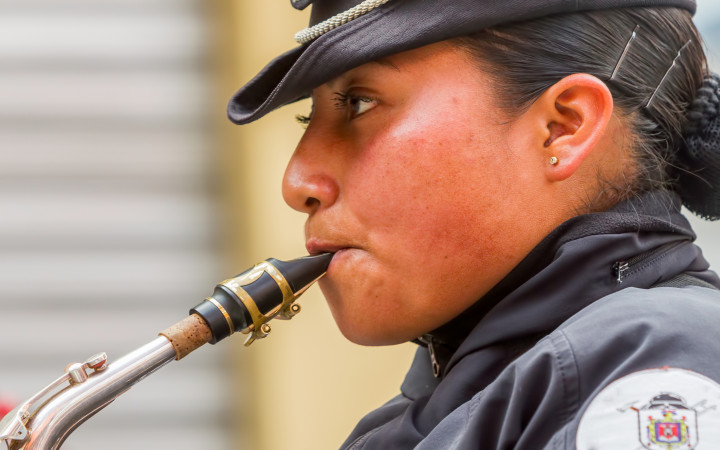Today’s Wonder of the Day was inspired by Lincoln. Lincoln Wonders, “why cant your breath out from your nose and breath in from your mouth???” Thanks for WONDERing with us, Lincoln!
Let’s start today’s Wonder of the Day with a breathing exercise. Ready? Okay—if you can, breathe in through your nose as you count to four. Now, hold that breath in for about three seconds. Finally, exhale slowly through your mouth for four seconds. Didn’t that feel nice? You can repeat this as many times as you want.
Breathing exercises are a great way to lower stress. Of course, they’re also used by many musicians. Have you ever played a trumpet, clarinet, or tuba? If so, you know how easy it is to run out of breath.
Musicians train for years to master the skill of breathing while playing their instrument. Others learn to breathe in a way that allows them to play music without stopping to inhale. What are we talking about? A technique called circular breathing.
When musicians practice circular breathing, they inhale through the nose while also blowing air out through the mouth. Does that sound difficult? For most people, it is! Even the most skilled musicians spend years trying to master this skill.
Historians think circular breathing may have started with the Aboriginal people of Australia. They developed the technique to play the didgeridoo, which is the oldest wind instrument in the world. Circular breathing allows them to play for long periods of time without a break in the sound.
Today, circular breathing is popular for all sorts of wind instruments. How is it done? At first glance, it may seem like musicians are inhaling and exhaling at the same time. However, that’s not exactly right. To use this technique, players puff out their cheeks as they start to run out of breath. Then, they use their cheeks to blow air into the instrument. At the same time, they inhale through their nostrils.
Using circular breathing, musicians can hold long notes without pausing. It takes a lot of practice to play well using this skill, but many find that it’s worth it. Circular breathing is popular with those who play the bagpipes, saxophone, and other wind instruments. Some singers also use the method—especially those who learn Tuvan throat singing.
Circular breathing is also used in meditation. Some believe it can help release negative energy. Is that true? We can’t say for sure. However, a 2016 study did find that circular breathing can help ease symptoms of depression and anxiety. It can also improve brain function and physical performance.
Have you ever tried circular breathing? Whether you’re using it to play music or meditate, it can be helpful to learn from an expert. Many people master the skill after years of practice. Maybe you’ll one day be able to pass it on to someone else!
Standards: CCRA.L.3, CCRA.L.6, CCRA.R.1, CCRA.R.2, CCRA.R.4, CCRA.R.10, CCRA.SL.1, CCRA.SL.2, CCRA.W.3, CCRA.L.1, CCRA.L.2




